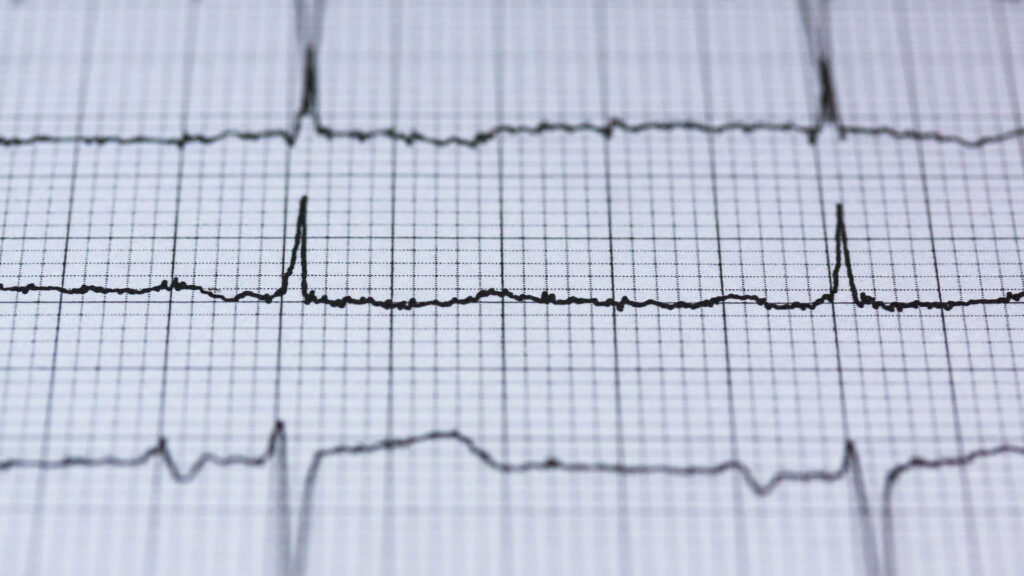The healthcare community tends to overlook the importance of having a healthy resting heart rate, and that shouldn’t be so.
One of the main goals in healthcare is to prolong how long a person lives. And at the same time living in a manner that is healthy for as long as possible. Nobody is looking forward to living in a state of morbidity (the condition of being diseased) when they get older.
A conclusively proven independent risk factor for mortality is the resting heart rate (RHR).
In case you were wondering, the definition of mortality is the state of being subject to death. Also, another acronym you’ll see throughout this post is BMP; it stands for beats per minute.
Research on the Effects of an Elevated Resting Heart Rate
Studies show there are two significant factors associated with an increased risk of all-cause mortality [1]:
An elevated RHR during childhood (≥97 BPM) and midlife (≥81 BPM)
Substantial changes in mid-adulthood RHR (>25 BPM increased change in over seven years)
Further studies found that an elevated RHR also has an increased risk of [2]:
- coronary heart disease
- sudden cardiac death
- heart failure
- atrial fibrillation
- stroke
- cardiovascular disease
- total cancer
You should not ignore the severe condition of an elevated RHR. It is possible to lower a high RHR into a healthy range if caught in time.
Where Your Resting Heart Rate Should Be
The American Heart Association says, “Your resting heart rate is the heart pumping the lowest amount of blood you need because you’re not exercising. If you’re sitting or lying, calm, relaxed, and aren’t ill, your heart rate is normally between 60 BPM and 100 BPM [3].”
However, research shows that a resting heart rate ≥ 78 BPM independently predicts cardiovascular and all-cause mortality [4].
How Your Lifestyle Affects Your Resting Heart Rate
These things indicate you most likely have an elevated RHR:
- Smoking
- Diabetes
- High blood pressure
- Overweight
- Stress
- Sedentary lifestyle
And these indicate you most likely have a healthy RHR:
- Eat healthy balanced meals
- Average weight
- Regular exercise (moderate intensity for at least 150 minutes per week)
- Adequate sleep
If you live an active lifestyle, it’s a possibility that your RHR is as low as 40 BMP; this is because your heart is in good condition. It doesn’t have to work as hard to keep a steady beat.
Conclusion
Having a healthy resting heart rate is important. It’s your best chance of living a life free from disease. You can’t start too soon. I believe we’re going to see all types of morbidity skyrocket soon because our culture craves convenience. And convenience lends itself to inactivity.
In my next post, Exercise and Resting Heart Rate, I discuss the types of exercises that are best for improving your RHR.
Until next time, live sensible, be healthy.
[1] Hartaigh B.O., Gill T.M., Shah I., Hughes A.D., Deanfield J.E., Kuh D., Hardy R. Association between resting heart rate across the life course and all-cause mortality: Longitudinal findings from the Medical Research Council (MRC) National Survey of Health and Development (NSHD) J. Epidemiol. Community Health. 2014;68:883–889. doi: 10.1136/jech-2014-203940. https://www.ncbi.nlm.nih.gov/pubmed/24850484 –> BACK <–
[2] Aune D., Sen A., o’Hartaigh B., Janszky I., Romundstad P.R., Tonstad S., Vatten L.J. Resting heart rate and the risk of cardiovascular disease, total cancer, and all-cause mortality—A systematic review and dose-response meta-analysis of prospective studies. Nutr. Metab. Cardiovasc. Dis. 2017;27:504–517. doi: 10.1016/j.numecd.2017.04.004. https://www.ncbi.nlm.nih.gov/pubmed/28552551 –> BACK <–
[3] All About Heart Rate (Pulse). July 2015, www.heart.org/en/health-topics/high-blood-pressure/the-facts-about-high-blood-pressure/all-about-heart-rate-pulse –> BACK <–
[4] Fagundes J.E., Castro I. Predictive value of resting heart rate for cardiovascular and all-cause mortality. Arq. Brasil. Cardiol. 2010;95:713–719. doi: 10.1590/S0066-782X2010005000149. https://www.ncbi.nlm.nih.gov/pubmed/21109916 –> BACK <–


